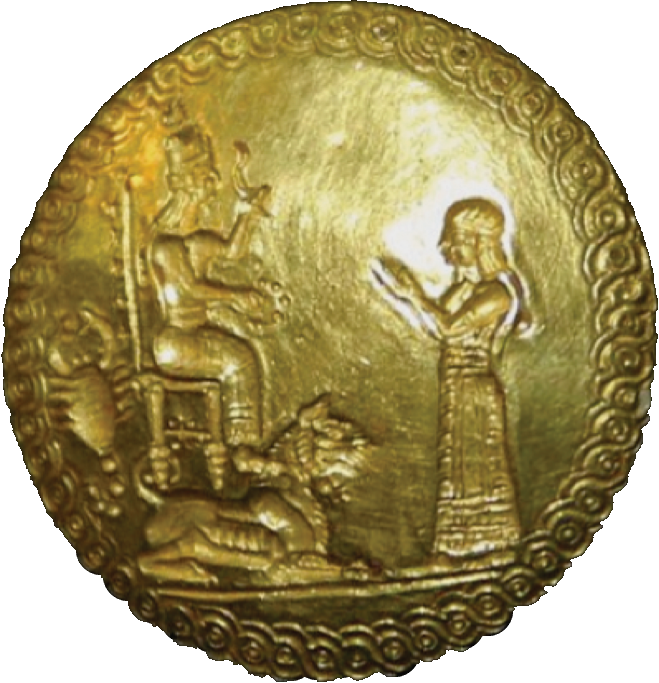

 | Object type: Seal |
| Museum: IM 115644, The Iraq Museum | |
| Findspot: Excavated/Findspot: Kalhu, Northwest Palace, Coffin 2, Tomb 3 underneath Room 57 (Nimrud, north of Iraq) | |
| Culture, period: Neo-Assyrian | |
| Production date: c. 782 and c. 773 BC | |
| Material: Gold | |
 | Dimension: |
 | Nonverbal Communication: Raising of the hand, Raising of the hands, Erect posture |
Description:
The golden seal of Hama shows the queen, wife of Shalmaneser IV, approaching a goddess who is probably Gula, and seated on a straight-backed throne supported by a crouched dog. A scorpion is located behind the throne.
On the basis of some textual evidence from the Neo-Assyrian period which describes a gesture implying the raising of the hand(s), the Akkadian expressions used to describe such a gesture are conventionally šu’illakku and nīš qātī, which can be interpreted as an idiom for “prayer” and commonly include a physical movement. The seated goddess, instead, probably performs a greeting gesture addressed to the queen.
Bibliographic references:
Hussein M. M. 2016: Nimrud. The Queen’s Tombs. Baghdad / Chicago: Iraqi State Board of Antiquities and Heritage / The Oriental Institute of the University of Chicago, 127 (study)
Spurrier T. 2017: “Finding Hama: On the Identification of a Forgotten Queen Buried in the Nimrod Tombs”, Journal of Near Eastern Studies 76(1), 149-174 (study)
Portuese L. 2022: “A Gender-Centered Perspective on Manners and Etiquette for Understanding the Historical Role of the Assyrian Queen”, KASKAL Rivista di storia, ambienti e culture del Vicino Oriente Antico 19, 50–52 (study)
© Image credits: Spurrier T. 2017: “Finding Hama: On the Identification of a Forgotten Queen Buried in the Nimrod Tombs”, Journal of Near Eastern Studies 76(1), figs. 6, 8
